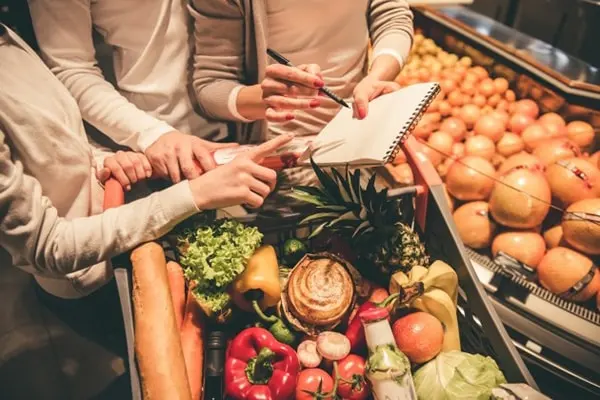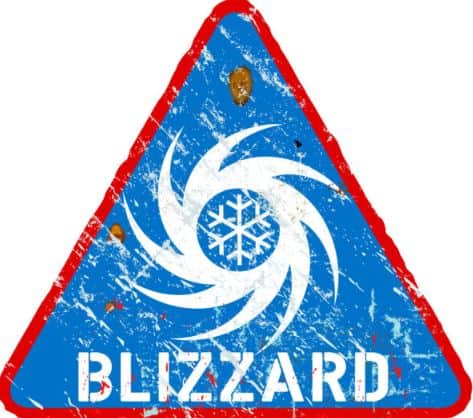How Much Survival Food Do I Need: Expert Tips & Strategies

Curious about how much survival food you need? Planning for emergencies or outdoor adventures requires careful consideration of your food supply. Understanding the right amount of survival food ensures you’re prepared for any situation. Whether it’s a natural disaster or a camping trip, having enough food can make all the difference. Stay tuned to discover essential tips on calculating and stocking up on survival food to keep you safe and well-fed in challenging times.
Key Takeaways
- Ensure you have an ample supply of water stored, as it is crucial for survival in emergency situations.
- Calculate your immediate food needs based on the number of people in your household and potential duration of a crisis.
- Establish a short-term food storage plan with non-perishable items that can sustain you for at least a few days.
- Develop a medium-term food planning strategy by expanding your stockpile to cover several weeks or months.
- Create a long-term stockpile strategy by including foods with longer shelf lives and considering sustainability.
- Prioritize nutritional considerations when selecting survival foods to maintain health and energy during challenging times.
Importance of Water Storage
Emergency Needs
In emergencies like natural disasters or power outages, having sufficient survival food is crucial. Essential items for emergency food supply include non-perishable foods, water, and a manual can opener. Having a well-thought-out plan ensures quick access to necessary supplies during crisis situations.
Daily Consumption
Calculate the daily food and water requirements based on age, activity level, and health conditions. Consistent consumption routines help maintain energy levels and overall well-being during stressful times. During emergencies, individuals may need more calories due to increased physical exertion and stress.
Storage Methods
Survival food can be stored in various ways such as freeze-drying, vacuum sealing, or using Mylar bags. To ensure longevity, store food in a cool, dark place away from moisture and pests. Storage methods directly impact the quality and shelf life of survival food products.
Calculating Immediate Food Supply
Three-Day Supply
A three-day emergency food supply should consist of non-perishable items like canned goods, protein bars, and dried fruits. It is vital to have enough supply for at least three days to sustain yourself during emergencies. Include items such as canned beans, tuna, peanut butter, and granola bars in your three-day supply.
Per Adult Basis
When planning survival food, it is essential to consider the individual needs of each adult. Adults typically require about 2,000-2,500 calories per day to maintain energy levels. Ensure you calculate the necessary supplies for adults based on their specific dietary requirements, such as any allergies or medical conditions they may have.
Example Calculations
To determine the amount of survival food needed, start by calculating the total number of adults in your household. Then, multiply this by the number of days you want to prepare for. For example, if you have 4 adults and aim for a three-day supply, you would need to account for 12 adult-days worth of food. Consider factors like activity levels and any additional nutritional needs when calculating food quantities.
Short-Term Food Storage

30-Day Calculation
To calculate food and water needs for a 30-day period, multiply the daily intake by 30. Consider perishable foods and their limited shelf life. Adjust calculations for extended periods by incorporating more canned foods with long shelf lives.
Planning for an extended period poses challenges like ensuring variety and nutritional balance in the diet. It’s crucial to rotate food items regularly to maintain freshness. Adjust calculations for longer durations by including essentials like baby food, canned legumes, sugar, and salt.
Per Person Essentials
Include essential items like canned foods, baby food, and canned legumes in each person’s survival food supply. Personalize supplies based on individual preferences and dietary restrictions to ensure adequate nutrition. A checklist should cover canned goods, water, snacks, and special dietary needs.
Children’s Needs
Children have unique dietary needs during emergencies; consider including familiar foods to ensure they eat well. Plan for their preferences while maintaining a balance of nutrients. Include items like baby food, formula milk, and snacks they enjoy.
Adult’s Requirements
Adults require more calories than children; factor in their energy needs when planning survival food supplies. Consider physical activity levels and health conditions when determining portion sizes. Tailor the supply with a mix of proteins, carbohydrates, fats, vitamins, and minerals.
Medium-Term Food Planning
3-6 Month Estimation
Estimating food supplies for a 3-6 month period is crucial for sustaining during emergencies. Consider caloric needs and diverse food options. Challenges include storage space limitations and ensuring nutritional balance. To plan effectively, rotate stock, prioritize non-perishables, and monitor expiration dates.
Individual Calculations
Individual calculations are essential to tailor survival food requirements accurately. Use online calculators or guides to determine precise caloric needs. Customizing supplies based on age, activity level, and dietary restrictions enhances preparedness. Personalized planning ensures adequate nutrition and minimizes waste.
Family Considerations
Planning survival food for a family involves unique challenges like accommodating varied preferences and dietary restrictions. Consider each family member’s needs when stocking up on essentials. Rotate foods regularly, involve family members in meal planning, and store a variety of options to cater to everyone’s tastes.
Long-Term Stockpile Strategy
12+ Months Preparation
Planning for long-term survival food stockpiling requires meticulous attention to detail and strategic foresight. To sustain oneself for over a year, individuals must focus on sustainability and regular replenishment. It is crucial to rotate supplies, ensuring freshness and viability throughout the extended period. Creating a detailed inventory and monitoring expiration dates are vital components of long-term preparation.
To effectively manage food supplies for prolonged emergencies, it is recommended to establish a rotation system based on first-in-first-out principles. This approach guarantees that older supplies are consumed first, maintaining freshness and quality. Incorporating non-perishable items with long shelf lives is essential for sustained preparedness.
Quantity Determination
Determining the appropriate quantity of survival food hinges on various factors, including age, activity level, and health conditions. Individuals with higher energy requirements due to physical exertion or specific medical needs must adjust their food calculations accordingly. Considering these variables ensures that each person’s unique dietary needs are met during emergencies.
Accurately assessing the quantity of food required for different scenarios involves calculating caloric intake based on daily energy expenditure. Age groups have varying nutritional needs; children and elderly individuals may require specialized diets rich in essential nutrients. By factoring in these considerations, one can tailor their survival food stockpile to meet specific requirements.
Essential Variety
Incorporating a diverse range of foods in survival supplies is paramount for maintaining optimal health during crises. Including nutrient-rich options from various food groups ensures a well-rounded diet even in challenging circumstances. From grains and proteins to fruits and vegetables, a balanced assortment of foods offers comprehensive nutrition for sustained well-being.
Ensuring a varied diet during emergencies involves stocking up on canned goods, freeze-dried fruits, nuts, and other long-lasting items that provide essential nutrients. By diversifying one’s stockpile, individuals can mitigate the risk of nutrient deficiencies and maintain overall health in times of need.
Nutritional Considerations
Balanced Diet
A balanced diet is crucial for ensuring optimal health and energy levels during emergencies. Incorporating a variety of food groups such as fruits, vegetables, proteins, grains, and dairy can provide essential nutrients.
By combining rice with beans, you can create a complete protein source that is vital for muscle function and repair. Including canned fruits alongside nuts offers a mix of vitamins, fiber, and healthy fats.
Maintaining a balanced diet not only supports physical health but also impacts mental well-being. Consuming a variety of foods helps in sustaining energy levels and promoting overall resilience during challenging times.
Special Dietary Needs
Meeting special dietary needs poses unique challenges in emergency situations. Individuals with allergies or intolerances require careful planning to avoid adverse reactions.
Strategies like opting for gluten-free grains, plant-based proteins, or dairy alternatives can help cater to specific dietary requirements. It’s essential to label food items clearly to prevent accidental consumption of allergens.
Planning ahead by stocking up on specialized items like soy milk for lactose intolerance or gluten-free snacks ensures that individuals with special dietary needs have access to suitable options in survival food supplies.
Organizing Your Food Stockpile
Space Management
Efficiently organizing survival food stockpiles is crucial for emergency preparedness. Utilize vertical space by installing shelves or racks. Maximize pantry space by using clear containers to store items like rice, beans, and pasta.
To optimize storage areas, categorize food supplies based on expiration dates and types. Label containers with dates for easy identification. Create a rotation system to ensure older items are used first, reducing waste and ensuring freshness.
During emergencies, easy access to stored food is essential. Keep frequently used items within reach. Consider rotating stockpile locations to prevent spoilage and maintain quality over time.

Rotation Practices
Regularly rotating survival food prevents the risk of consuming expired or spoiled items during crises. Implement a “first in, first out” system when restocking supplies. Check expiration dates monthly and replace any expired products promptly.
Expired food can lead to illness or reduced nutritional value during emergencies. By rotating food supplies, you ensure that your stockpile remains fresh and safe for consumption. Plan meals around soon-to-expire items to avoid waste.
Maintaining a well-organized and regularly rotated food supply not only ensures freshness but also enhances overall emergency preparedness efforts.
Expert Preparedness Tips
Regular Updates
To maintain readiness, regularly update and review survival food supplies to ensure freshness and adequacy. Check expiration dates and rotate items to prevent spoilage or loss of nutritional value.
- Conduct monthly inspections
- Rotate stock based on expiry dates
- Adjust quantities as per changing needs
Updating supplies is crucial due to changing circumstances like natural disasters or personal dietary requirements. Ensure your emergency food provisions align with current needs.
Practical Skills
Acquire essential skills for managing survival food effectively, including meal planning, proper food preservation, and mastering emergency cooking methods. These skills are vital during crises.
- Learn to create balanced meals
- Practice canning and dehydrating foods
- Familiarize yourself with alternative cooking methods
Having practical skills ensures you can efficiently utilize your food stockpile during emergencies. By honing these abilities, you enhance your preparedness level significantly.
Summary
In times of uncertainty, having a well-thought-out survival food plan is crucial. From immediate needs to long-term strategies, you’ve learned the importance of water storage, calculating food supply, and considering nutritional aspects. Organizing your stockpile efficiently and following expert tips can make all the difference in an emergency. Remember, preparedness is key.
Ensure you have enough food and water for your family’s needs. Stay informed, stay ready, and stay safe. Your preparedness today ensures your peace of mind tomorrow.
Frequently Asked Questions
How important is water storage in emergency preparedness?
Water storage is crucial for survival as the human body cannot function without it. Aim to store at least one gallon of water per person per day for a minimum of three days.
What factors should I consider when calculating my immediate food supply needs?
Calculate your immediate food supply based on the number of people in your household, dietary restrictions, and special needs. Plan for at least a 3-day supply of non-perishable food items.
How should I approach short-term food storage for emergencies?
Focus on easily accessible and quick-to-prepare foods like canned goods, dried fruits, and energy bars. Store foods with a long shelf life that require little to no cooking or refrigeration.
What does medium-term food planning entail in emergency preparedness?
Medium-term food planning involves stocking up on supplies that can last from a few weeks to several months. Consider items like rice, pasta, canned vegetables, and other staples with extended shelf lives.
What strategies can I employ for a long-term stockpile of survival food?
For long-term stockpiling, invest in freeze-dried or dehydrated foods, bulk grains, seeds, and other essentials that have a shelf life of several years. Rotate your stockpile regularly to ensure freshness.
How do nutritional considerations play a role in emergency food planning?
Ensure your emergency food supplies are nutritionally balanced by including a variety of food groups such as grains, proteins, fruits, and vegetables. Aim to meet daily caloric needs while providing essential nutrients for overall health.
What are some expert tips for organizing an effective food stockpile?
Categorize your supplies by type and expiration date to easily track inventory. Use clear containers for visibility and label everything clearly. Regularly check and update your stockpile to maintain freshness and readiness.






